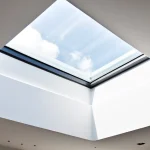Overview of Sustainable Renovation for Historic Homes
Sustainable renovation has become increasingly essential for historic homes, particularly within culturally rich cities like Cambridge. While preserving the historical significance of these homes, it is crucial to balance ecological goals. This entails integrating energy-efficient solutions without detracting from the home’s historical integrity.
The benefits of renovating historic homes for sustainability are manifold. Primarily, adopting sustainable renovation practices significantly reduces the carbon footprint, aligning with global environmental goals. Moreover, modern sustainable solutions can enhance the comfort and efficiency of older structures, leading to lower utility costs and greater long-term savings.
Also to discover : Understanding how aging electrical wiring impacts home insurance rates in liverpool: essential insights for homeowners
Cambridge offers a unique backdrop for such renovations, with its blend of historical architecture and progressive community values. To ensure both sustainability and historical preservation, careful planning and collaboration with local heritage authorities are paramount. These efforts can include using energy-efficient fixtures, installing modern insulation techniques compatible with the original architecture, and employing environmentally friendly materials that mimic or complement historical fabrications.
In conclusion, while the task of marrying sustainability with historical preservation can be challenging, the resulting benefits for the environment, community, and homeowners themselves make the effort worthwhile. Sustainable renovation is not only an investment in the home but also in the future of heritage and environmental stewardship.
Topic to read : Unlocking Tax Incentives: Preserving Historic Properties in Bath for Financial Benefits
Sustainable Materials for Historic Renovations
Renovating historic homes with sustainable materials involves a thoughtful approach to ensure both eco-friendliness and historical fidelity. One effective strategy is utilizing reclaimed materials. These not only reduce waste but also offer authentic textures and patterns that align seamlessly with traditional architecture. Reclaimed wood from old barns or doors, for example, can be integrated into flooring or interior accents, providing both sustainability and historical accuracy.
Insulation poses another challenge in historic homes due to their unique architectural features. Modern eco-friendly insulation, such as sheep’s wool or cellulose, provides excellent thermal properties while being minimally invasive. These materials ensure efficiency without compromising the home’s structural integrity or aesthetic charm.
When it comes to finishes, eco-friendly paints and stains made from natural ingredients like milk proteins or clay can offer a historically authentic appearance while minimizing toxins. They are ideal for preserving the original look and feel of the home.
Sourcing these sustainable materials locally further enhances the renovation’s eco-friendliness and supports the community. Local suppliers often provide materials that are both environmentally responsible and compatible with regional architectural styles, ensuring renovations are both green and genuine to the home’s origins.
Techniques for Sustainable Renovation
When pursuing sustainable renovation in historic homes, one must carefully balance innovation with tradition. Using modern eco-friendly practices while preserving a building’s aesthetic is not only feasible but also beneficial for the structure and environment.
Energy-efficient upgrades are paramount. Integrating LED lighting, programmable thermostats, and energy-efficient appliances can substantially reduce energy consumption without altering the historic charm. For instance, discreet solar panels can be integrated into less visible areas to preserve the exterior facade while providing renewable energy sources.
Traditional building techniques complemented by modern technologies further enhance sustainability. The ancient practice of passive solar design—the strategic orientation of windows for sunlight maximization—is applicable alongside technologies like smart window tints that adjust intensity for climate control.
Moreover, retrofitting old water systems with contemporary water conservation features is an excellent way to increase sustainability. Incorporating low-flow plumbing fixtures, rainwater harvesting systems, and efficient irrigation methods ensures minimal water waste.
Through these effective renovation techniques, achieving historic preservation alongside environmental sustainability is entirely attainable. Homeowners embracing such methods ensure the long-term ecological responsibility of their dwellings, in harmony with maintaining their unique historical beauty.
Local Regulations and Guidelines
Undertaking a sustainable renovation in historic homes involves navigating Cambridge’s intricate local regulations. These guidelines ensure that any modification respects the architectural heritage while integrating eco-friendly elements. Understanding these regulations is crucial for any homeowner or renovator. Cambridge requires specific historic preservation laws that uphold the integrity of its storied buildings, demanding thorough consideration during renovations.
Overview of Cambridge Local Regulations
Regulations in Cambridge are designed to protect both the historical essence and modern aspirations of its buildings. They provide a legal framework dictating what changes can be made and how renovation guidelines should be adhered to. Compliance ensures the alignment of sustainable goals with historic preservation tenets.
Permitting Process
Securing a permit involves engaging with local heritage organizations, which can offer valuable insights into preserving historical aesthetics while incorporating sustainable technologies. Identifying and applying for the correct permits is essential to avoid legal issues and ensure the smooth progress of a renovation project.
Resources for Compliance
A range of community resources supports renovations. Local committees and workshops provide information and guidance for maintaining the balance between sustainability and preservation, encouraging thoughtful and legally compliant renovations.
Case Studies of Sustainable Renovations in Cambridge
Delving into case studies of sustainable renovations in Cambridge reveals the transformative potential these projects possess. Noteworthy examples exhibit how sustainability intertwines with historical preservation, offering valuable insights and guiding future endeavors.
One prominent project is the restoration of a Victorian terrace, where eco-friendly strategies were seamlessly integrated. This initiative included the installation of discreet solar panels and the rejuvenation of original wooden windows with double glazing. These steps not only preserved the building’s historical charm but also significantly improved energy efficiency.
Another example is the renovation of a Georgian townhouse that involved using sustainable materials such as reclaimed bricks and eco-friendly insulation. This approach maintained structural authenticity while addressing environmental concerns. The project also implemented rainwater harvesting systems, showcasing inventive water conservation techniques.
These case studies highlight key lessons, demonstrating how sustainable practices can enrich the historic fabric of Cambridge homes. They underline the importance of community engagement, balancing modern requirements with preserving the past. The ripple effect of these successful renovations is evident in the growing local and global interest in blending sustainable renovation with architectural heritage, driven by community initiatives and knowledge sharing.
Expert Insights on Sustainable Practices
Understanding the best methods for historic home renovation requires knowledge from those with hands-on experience. Interviews with local renovation experts provide profound insights into the sustainable adaptation of these classic structures. Local architects and builders shed light on the intricate balance between conservation and innovation.
Interviews with Local Renovation Experts
Experts accentuate the importance of comprehending a building’s original structure before making ecological upgrades. This insight helps in integrating eco-friendly practices without compromising historical integrity. They recommend an initial thorough assessment by professionals who specialise in historic structures.
Sustainable Practices from Industry Professionals
Sustainable renovation is not just about choosing the right materials or technologies. Industry professionals such as architects and conservationists recommend planning with a keen eye on long-term impacts. Emphasising small, incremental changes allows the building to evolve organically with the least disruption to its original character.
Historical Context in Renovation Design
Respecting the historical context is crucial. Practitioners suggest adopting a palette and design ethos that honours the building’s past. Incorporating historical insights into renovation enhances both sustainability and authenticity, ensuring legacy preservation for future generations. In this way, renovation becomes a bridge between eras, fostering a dialogue between history and sustainable progress.
Resources for Sustainable Renovation Projects
Embarking on a sustainable renovation project in Cambridge requires access to various renovation resources. Fortunately, the city hosts several local organizations dedicated to promoting sustainability in the restoration of historic homes. These groups offer guidance, support, and educational opportunities to ensure projects align with both ecological and preservation goals.
For homeowners seeking information and planning tools, numerous online platforms provide detailed strategies and tools. These resources help in selecting sustainable materials, finding qualified professionals, and understanding Cambridge-specific initiatives for eco-friendly construction.
Securing funding and support can significantly ease the financial burden of renovation projects. Programs such as governmental grants and incentives are available to those committed to enhancing energy efficiency and sustainability. It is advisable to explore these options early in the renovation process to maximize their benefits.
Community workshops and seminars further facilitate knowledge sharing and collaboration, presenting opportunities to learn from experts and peers. Additionally, engaging with these resources helps build a network of support, ensuring the seamless execution of sustainable renovation initiatives. Emphasizing sustainability in this context not only protects historical legacies but also fosters a community focused on sustainable future practices.







